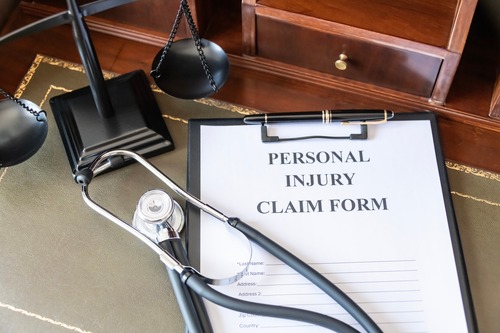Recovering from a car accident can be a challenging journey, and once you’re finally cleared to return to work or exercise, the last thing you want is a setback. The reality is that many accident survivors face an increased risk of re-injury as they transition back into their daily activities. Understanding the common risks and taking proactive measures can help you rebuild strength and confidence while keeping re-injury at bay. Here’s a guide to help you safely return to work or physical activities and avoid further injuries.
1. Follow a Structured Return-to-Activity Plan
When your doctor gives the green light to resume work or exercise, they typically provide guidelines. Following a structured return-to-activity plan can help you ease back into your routine. Gradual re-introduction to activity—whether it’s work duties or fitness exercises—allows your body to adapt to the demands of your job or exercise routine without overloading healing tissues. For instance, if you’re recovering from a back or shoulder injury, jumping straight back into heavy lifting or repetitive motion can easily lead to re-injury.
Tips:
- Start Small: For both exercise and work, begin with lower intensity and shorter durations, gradually building up as you gain strength.
- Take Breaks: Especially if your job involves physical labor, take short, regular breaks to rest and assess any discomfort.
2. Prioritize Proper Body Mechanics
After an accident, it’s common to have a degree of weakness or stiffness that may change your movement patterns. Poor body mechanics, like improper lifting techniques or awkward sitting postures, can place unnecessary strain on healing muscles and joints.
Tips:
- Lifting Techniques: Keep the weight close to your body, bend from the knees, and avoid twisting your spine.
- Ergonomics at Work: Set up your workspace to promote good posture—adjust your chair, keyboard, and computer to prevent strain.
- Mindful Movement: Focus on performing every movement with attention to form, which can reduce stress on vulnerable areas.
3. Gradually Increase Activity Intensity
Once cleared for exercise, it’s tempting to resume previous routines. However, your body might not yet be ready for high-intensity or high-impact activities. Pushing too hard too soon can strain weakened muscles, tendons, or ligaments, increasing the risk of another injury.
Tips:
- Low-Impact Exercises: Start with low-impact options like swimming, walking, or using an elliptical machine, which reduce stress on joints.
- Slow Progression: Gradually increase weights, speed, and resistance, monitoring your body’s response to each new level.
- Listen to Your Body: Watch for signs of discomfort, swelling, or unusual pain, which could indicate the need to scale back.
4. Don’t Skimp on Physical Therapy Exercises
If you’ve been given physical therapy exercises, continue them as prescribed—even after clearance. These exercises are specifically designed to restore strength, flexibility, and stability, addressing areas weakened or damaged during the accident. Sticking to your prescribed exercises can make all the difference in preventing re-injury.
Tips:
- Incorporate Exercises Daily: Make them part of your daily routine to continue building strength and mobility.
- Maintain Good Form: As your body becomes familiar with the exercises, make sure to focus on form over speed.
- Communicate with Your Physical Therapist: Regular check-ins with your therapist can help address any emerging concerns and adjust your program as needed.
5. Manage Inflammation and Pain Responsibly
While you may be cleared to return to normal activities, your body may still be sensitive. Recognizing and managing inflammation or pain is crucial to avoid pushing your body too far. Overusing painkillers to mask discomfort, for instance, can lead you to overexert yourself, setting the stage for re-injury.
Tips:
- Ice Therapy: Apply ice packs on any areas that feel sore after exercise or work to reduce inflammation.
- Stretch and Rest: Incorporate regular stretching and rest days to allow your body time to heal and adapt.
- Avoid Over-the-Counter Painkillers: Use painkillers cautiously and consult with your doctor to avoid relying on them as you return to activity.
6. Prioritize Core Stability and Flexibility
Core stability plays a major role in supporting the spine and minimizing the risk of injuries. Flexibility in major muscle groups, particularly in the hamstrings, hip flexors, and shoulders, also helps in preventing strain during physical activities. Focused core and flexibility training can give your body the stability and range of motion it needs to perform safely and effectively.
Tips:
- Core Exercises: Incorporate exercises like planks, bridges, and stability ball exercises into your routine.
- Stretching Routine: Stretch your hamstrings, hip flexors, and shoulders regularly, especially if you’ve been sedentary or are returning to a desk job.
- Balance and Stability Drills: Practice balance drills or try single-leg exercises to improve stability and reduce the risk of falls or awkward movements.
7. Communicate with Your Healthcare Providers
Your care doesn’t end after the initial injury treatment or clearance to return to work. Keep in touch with your healthcare providers, including physical therapists and primary care doctors, as you resume activities. They can provide ongoing guidance and help you modify your approach if you encounter challenges.
Tips:
- Schedule Follow-Ups: Regular check-ins, even after being cleared, can help your providers monitor progress and catch any red flags.
- Report Symptoms Early: Mention any recurring or new pain so your provider can make adjustments before the symptoms worsen.
- Document Your Progress: Keeping a simple log of activities and any discomfort can help you and your provider track patterns that might need attention.
8. Be Patient and Give Yourself Time
Recovery and reintegration into normal activities aren’t always linear. While it may be frustrating to wait, patience is essential to avoid setbacks. Pushing too hard, too fast can undermine the progress you’ve made.
Tips:
- Set Small Goals: Focusing on short-term, achievable goals can help you stay motivated while avoiding the urge to overdo it.
- Celebrate Milestones: Recognizing small successes, like improved range of motion or increased activity duration, can boost morale.
- Focus on Consistency: Consistency over time is more valuable than a quick, intense return to activity.
What It Means For Your Recovery
Getting cleared to return to work or exercise after an accident is a significant achievement, but it’s only the beginning of a careful transition back to full activity. Following a structured plan, prioritizing body mechanics, managing inflammation, and staying in touch with your healthcare providers can make a substantial difference in avoiding re-injury. By approaching each step with patience and mindfulness, you can strengthen your body, regain confidence, and move forward safely.
Hurt911® Colorado is here to support you on your journey to recovery, offering resources and guidance every step of the way. Don’t hesitate to reach out at 720-414-0000 if you have any questions or need assistance in creating a personalized injury recovery plan.







